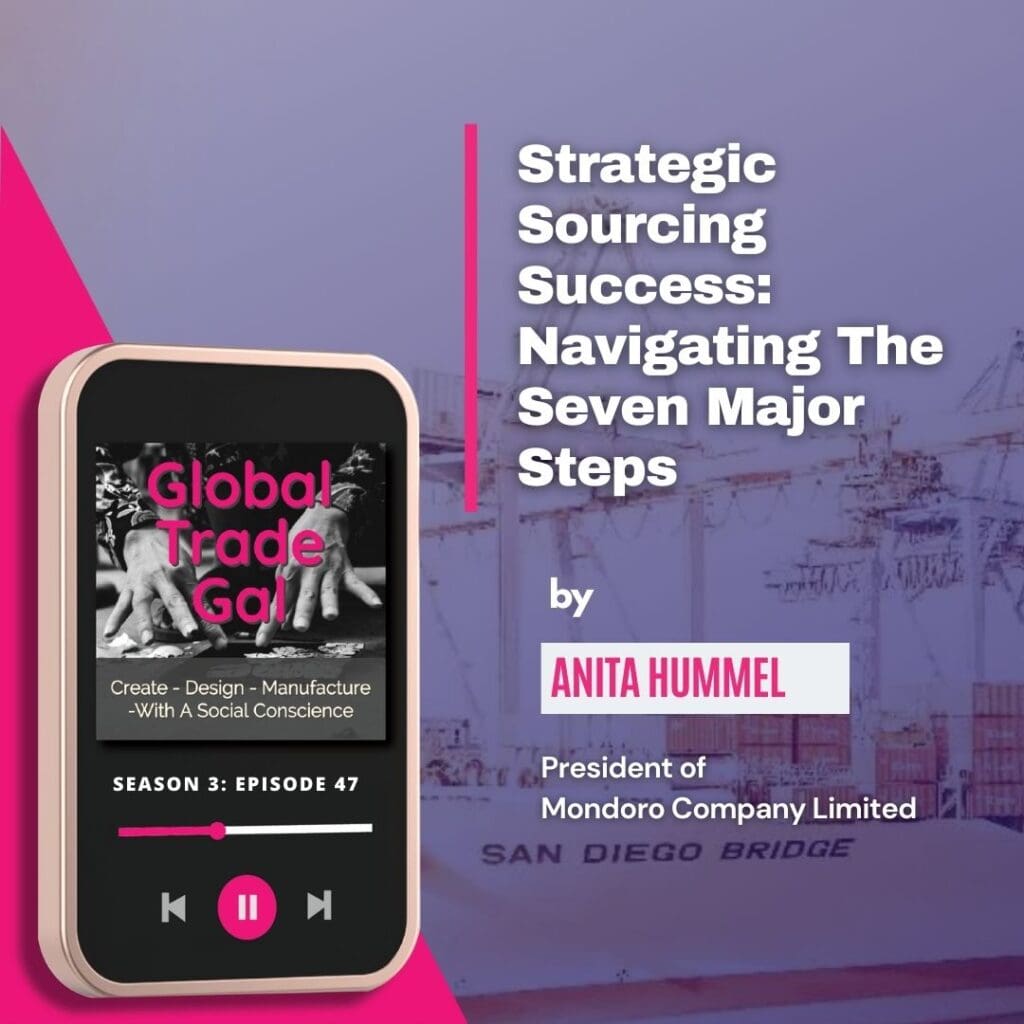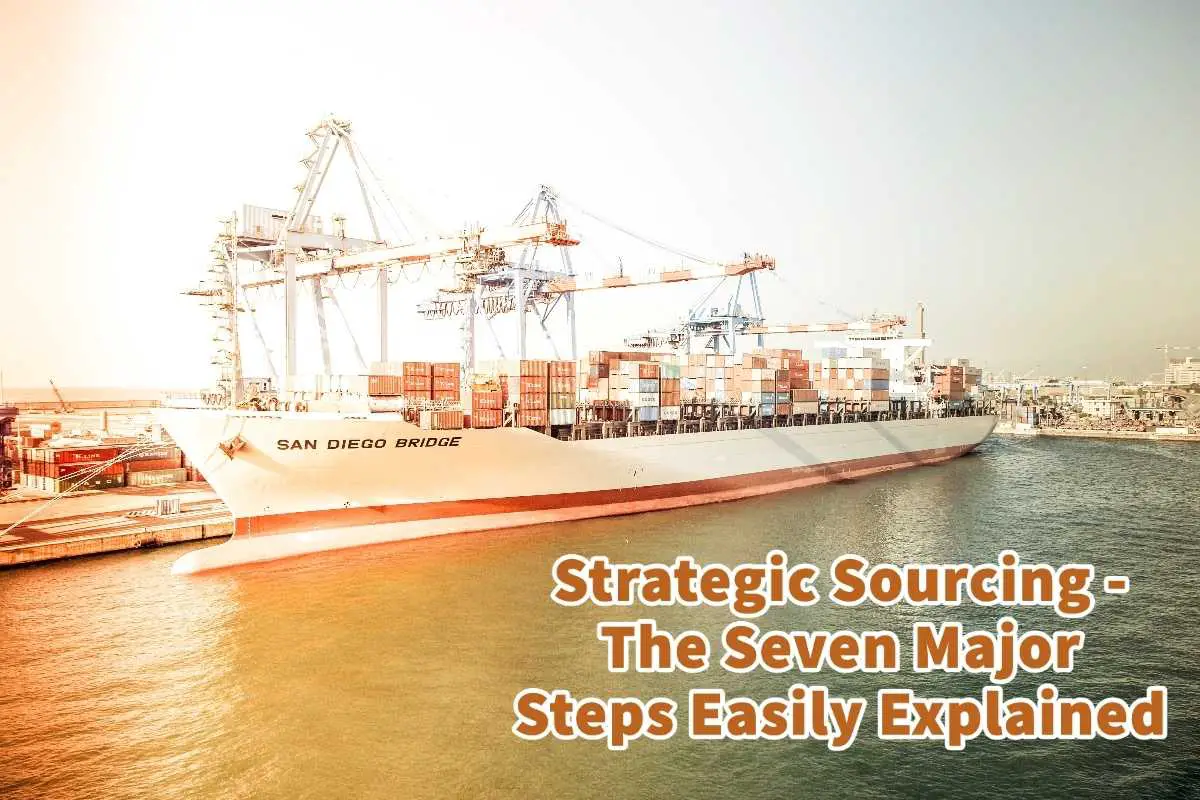In today’s competitive environment, many professionals are looking at how to add value to their supply chain. Everyone wants to optimize costs while getting the highest quality product at the same time.
There are seven significant steps in strategic sourcing, and each phase is designed to help you make the best strategic sourcing decision possible. You want to be sure to have a vendor who sees themselves as a stakeholder and part of your team so that you can grow together. Strategic sourcing brings everyone, even the vendors, on board as part of your team.
Table of Contents
- Seven Key Steps of Strategic Sourcing Simplified
- Step 1 – Understand What You Are Sourcing
- Step 2 – Understand Your Buying Power And Position
- Step 3 – Develop Your Sourcing Strategy
- Step 4 – Work With Suppliers To Get Quotes
- Step 5 – Negotiation
- Step 6 – Implement And Integrate
- Step 7 – Benchmarking And Review
- Listen To Our Podcast About Strategic Sourcing Success: Navigating The Seven Major Steps Below or By clicking here.
- Related Content
Seven Key Steps of Strategic Sourcing Simplified
Introduction Rewrite: “In the fast-paced and competitive world of supply chain management, professionals are constantly seeking ways to enhance value, optimize costs, and ensure the highest quality in their products.
Strategic sourcing plays a pivotal role in achieving these goals. This approach involves seven crucial steps, each designed to guide you toward making informed and effective sourcing decisions.
A core aspect of strategic sourcing is the integration of vendors as stakeholders and team members, fostering a collaborative environment that benefits all parties and contributes to mutual growth.”
Step 1 – Understand What You Are Sourcing

The first step is to understand what you are sourcing. This may seem to be an essential part of sourcing, but you would be surprised how many people are “fishing.” They are unsure what they want to buy: color, price, quantity, or quality.
To be effective in sourcing, you need to understand fully what you want to buy and why. The entire efficiency of strategic sourcing is that you look at all aspects of your sourcing needs and fully understand what you are buying and why.
Step 2 – Understand Your Buying Power And Position

The next aspect is to understand your buying power and position. Are you in a category that has high competition? Are you looking for low quantities but at a price that most people buy large volumes for?
The problem is that you may find that the suppliers set up for mass volume and low prices are not interested in working with you. They may even allow you to come into the factory and talk to you about the price, but when they get the order, they may refuse it as the quantity is not enough for the price they have given.
I have seen this game played many times. A customer will go into a vendor with the attitude that a customer is a king. They will go to a supplier and tell them to give them a price for 100,000 pieces. The supplier provides the price of 100,000 pieces. Then the order comes back in for 1,000 pieces.
The customer then tries to push the vendor to give them the same price for 1,000 pcs as they would provide for 100,000 pieces. Usually, the vendor will refuse and walk away.
I have found the vendor will refuse that order most of the time. First, they have lost trust as you have lied to them, or they will come back and say sorry, this is the price now.
The problem with that game is that no one is being fooled, and it hurts the vendor and your long-term relationship of trust, as they had lost confidence in you before you started working with them.
It is essential you fully understand what you are looking for in your sourcing strategy at the beginning, as it will help you focus on finding the right vendors.
Step 3 – Develop Your Sourcing Strategy

Now that you know what you will buy, what volume, and what type of supplier, you can work to focus your sourcing strategy. Developing your sourcing strategy is a crucial next step.
During this step, you can look at any existing and potential suppliers. Maybe even those you have worked with in the past.
Establish in this step your clear business goals and the suppliers’ minimum requirements. List out the supplier’s criteria and find the most well-suited ones for your needs.
Step 4 – Work With Suppliers To Get Quotes

You notice that up until this point, you have not asked for any quotes from suppliers, and all the work you have been doing has been without any suppliers but instead with your in-house team; you have gone through all the other three steps with your sourcing team.
Now, you can ask the suppliers to give you specific bids or quotations. If you have many items requiring that you ask them to do a sample to price it out, you may need to look at this aspect and decide which vendors you ask to do that for you.
From a vendor’s standpoint, you need to understand those pricing items can take time. So if you have a relationship with a supplier, getting some prices from them may be easier.
Step 5 – Negotiation

This step is the negotiation phase. This is where you start to decide who you will work with and why.
You can also let the vendors know they will be involved in this stage and that you are now making a decision. Most vendors are happy to be part of the process, especially if they feel like there is a chance they can get an order.
The danger with asking too many suppliers too often is if you continue to ask a supplier for a price and never give them orders, in the future, they may not be so willing to provide a price as they may not feel you are serious.
This can also be an issue if you ask them to do samples and nothing happens with the samples. Most suppliers want to get an order and do business, so they will do all they can to get the business.
Step 6 – Implement And Integrate

In this step, you will implement and integrate the supplier into your company. Strategic sourcing is about making the vendor an integral part of your business.
Your goal in strategic sourcing is to find a partner who will work with you long-term. Most good vendors also want to find a long-term vendor they can work with. The goal in strategic sourcing and the supply chain is finding a stakeholder who is your vendor.
You want to find someone who has invested in you and your success so that you can become stakeholders in each other’s success.
Step 7 – Benchmarking And Review

Now that the vendor is integrated into the process, you must spend time with the vendor to let them know what is expected of them as part of your supply chain.
Let them know how they are doing and what they can improve on or how they can make a difference. Let them know any problems or issues. Most vendors are willing to change where they can and help improve as they can.
One of the most essential things with strategic sourcing is that you bring in a supplier that is part of your supply chain and is a stakeholder in ensuring your success. So much of success is a joint effort between two groups of people working together.
Strategies sourcing is about finding that sweet spot where you have a vendor who cares about you and your success as much as you do so that together, you can both grow.
Listen To Our Podcast About Strategic Sourcing Success: Navigating The Seven Major Steps Below or By clicking here.

If you are interested in seeing how Mondoro can help you with your strategic sourcing – we would love to talk to you to see how we can help you – don’t hesitate to contact me, Anita. Check out my email by clicking here or become a part of our community and join our newsletter by clicking here.
Mondoro gives out a FREE Lookbook to anyone interested. You can receive a copy of our latest Lookbook by clicking here.
Listen to our Podcast called Global Trade Gal. You can find it on all major podcast platforms. Try out to listen to one of our podcasts by clicking here.
Subscribe to our Mondoro Company Limited YouTube Channel filled with great videos and information by clicking here.
Related Content
What Are The Major Benefits Of Strategic Sourcing?
Never underestimate the proper use of the strategic sourcing process in your supply chain. Strategic sourcing is a significant benefit to all stakeholders within the supply chain. Strategic sourcing forces all stakeholders to look at the supply chain strategy in detail. Strategic sourcing helps to eliminate any potential risks or problems.
You can discover more by reading What Are The Major Benefits Of Strategic Sourcing? by clicking here.
Seven-Step Strategic Sourcing Process Explained
A seven-step strategic sourcing strategy process will help companies be successful when looking to procure a product or a commodity. If companies take the time to go through each of the seven steps, this will help them to ensure they are successful with their sourcing needs.
You can find out more by reading our blog Seven-Step Strategic Sourcing Process Explained by clicking here.
Product Sourcing and Strategic Sourcing Explained
Product sourcing is when you source or look to find a supplier for a product you need. Strategic sourcing is strategically sourcing products. Strategic sourcing is not about the lowest purchase price but the lowest overall cost. Product sourcing and strategic sourcing are very similar, but strategic sourcing is sourcing with a plan in place.
You can learn more by reading Product Sourcing and Strategic Sourcing Explained by clicking here.


